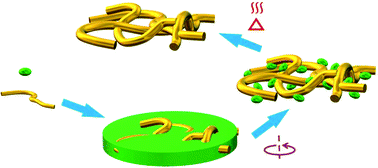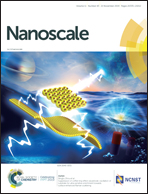Rapid template-free synthesis of nanostructured conducting polymer films by tuning their morphology using hyperbranched polymer additives†
Abstract
Nanostructures in conducting polymer films can enhance charge carrier and ion transfer, provide porosity with high specific area and confer unique optoelectronic properties for potential applications. A general and facile synthesis has been developed to prepare nanostructured conducting polymer films without the need for using templates. This simple approach employs hyperbranched polymers as additives to tune the morphology of conducting polymer films into a continuous nanofibril network. Nanostructured conducting polymer films with improved crystallinity exhibit good charge carrier transport and stable nanofibril network, without sacrificing either property upon removing residual additives. Polymer field-effect transistor sensors have been used to demonstrate the benefits of the large surface area provided by the nanofibril network. The sensors with porous nanostructures exhibit lower detection limits (two times lower) and faster response times (33% faster) compared to the sensors without nanostructures. This general approach can advance the knowledge and development of nanostructured conducting polymer films for energy harvesting and storage, electronics, catalysts, sensors and biomedical applications.



 Please wait while we load your content...
Please wait while we load your content...